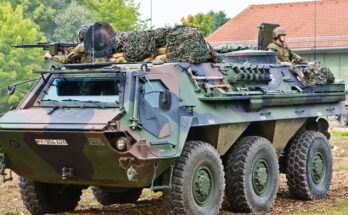By Derek Bisaccio, Eurasia Analyst, Forecast International.
In the early hours of November 24, two Turkish F-16s shot down a Russian Su-24M that, according to Turkish authorities, had crossed into Turkish airspace. The action, described by Russian President Vladimir Putin as a “stab in the back,”[i] drew immediate condemnation from Russia, which claimed that the aircraft had never left Syrian airspace. One of the pilots was later rescued, but one was killed after being fired upon while in the air by Turkmen rebel fighters in Syria. A search-and-rescue helicopter was forced to land after taking ground fire and was later destroyed by a TOW missile fired by a rebel group called the First Coastal Division.
Since the shootdown, Putin has delivered fierce criticisms of Turkey’s Syria policy while simultaneously increasing Russia’s profile in the conflict. In particular, Putin accused Turkey of supporting the IS terror group by purchasing oil smuggled out of Syria from IS-controlled territory. Turkish President Recep Tayyip Erdoğan has vehemently denied the claims, apparently promising to resign should Russia furnish evidence in this regard.[ii]
The back-and-forth over oil accusations likely will not produce any definitive answer, but still services Putin’s aims. Chatham House’s David Butter points out how the oil-smuggling accusation benefits Putin. He says it allows him to “gain propaganda points in his tussle with Turkish President Recep Tayyip Erdogan, and in some way legitimise recent Russian attacks on targets in parts of Syria that are held by non-IS rebel forces backed by Turkey.”[iii]
As noted in Forecast International’s brief overview of Russia’s involvement in Syria (produced just prior to the Su-24M shootdown),[iv] open-source analysts have alleged that Russia focuses predominantly on bombing non-IS rebel factions in Syria. Since the bombing of a Russian airliner in Egypt, Russian bombers have started hitting IS oil infrastructure, in particular, very hard – and continue to do so, as indicated by Ministry of Defense footage on December 2 reportedly showing air strikes targeting Khafsa Kabir near Manbij.[v]
However, the Su-24M downing has given Russia better justification for targeting non-IS factions. The Russian Air Force has heavily bombed northern Latakia,[vi] looking to hit the militias that shot at the Su-24M pilots. Russian Foreign Ministry Spokeswoman Maria Zakharova described those militias as “armed thugs” protected by Turkey.[vii]
In the important Aleppo battlefield, Russia has recently bombed Azaz,[viii] a town near the border with Turkey held by a coalition of Free Syrian Army rebel militias and Islamist groups, such as al-Qaeda’s Syrian branch, Jabhat al-Nusra. Within days of Russia hitting Azaz, Kurdish fighters from the People’s Protection Units (YPG) and Arab fighters of Jaysh al-Thuwar launched a surprise attack on rebel and Islamist forces in Malikiyah, a small village around 5 kilometers outside Azaz.
Liwa Ahrar Souriya, one of the rebel factions fighting the YPG and Jaysh al-Thuwar, alleged to opposition media that Russia is directly coordinating with those parties in an effort to cut off the rebel supply lines from Turkey to Syria and from Azaz to Aleppo city.[ix] Russia has not publicly stated whether it coordinates with either the YPG or Jaysh al-Thuwar, though the accusations do shed light on Russian Gen. Andrei Kartapolov’s statements in early November that Russian air strikes in various areas around the country have made use of data provided by the “Syrian opposition.”[x]
In any case, Russia has certainly continued to increase its presence in Syria, in large part by bulking up its air defenses. To deter further incidents with Turkish warplanes, Russia has equipped its Su-34s with air-to-air missiles,[xi] and deployed its guided missile cruiser Moskva to the Latakia coast.[xii] Russia had previously denied that it was deploying an S-400 air defense system to Syria, but two days after the Su-24M was shot down, Defense Ministry spokesman Igor Konashenkov acknowledged that the system had been delivered to Hmeymim air base.[xiii] Rather than scale back its fighter jets, Russia seems set to send more by reportedly planning to deploy to Sha’ayrat airfield in Homs.[xiv]
Erdoğan may have been hoping to send Moscow a message that Turkey is very much opposed to Russian engagement in Syria, particularly in areas close to the border, but it appears that Putin has opted to up the stakes instead.
[i] Al-Jazeera, “Putin: Turkey’s downing of jet a ‘stab in the back,'” November 24, 2015. http://www.aljazeera.com/news/2015/11/russia-turkey-jet-syria-shot-151124140238943.html
[ii] Al-Jazeera, “Erdogan challenges Putin to prove ISIL oil claim,” December 1, 2015. http://www.aljazeera.com/news/2015/12/erdogan-challenges-putin-prove-isil-oil-claim-151201063413183.html
[iii] David Butter, “Does Turkey really get its oil from Islamic State?” BBC News, December 1, 2015. http://www.bbc.com/news/world-europe-34973181
[iv] Derek Bisaccio, “Brief Overview: Russian Intervention in the Syrian Civil War,” Forecast International, November 23, 2015. http://www.defensesecuritymonitor.com/wordpress/brief-overview-russian-intervention-in-the-syrian-civil-war/
[v] Russian Defense Ministry, “Air strikes on the refinery in the area of Khafsa Kabir,” December 2, 2015. http://www.youtube.com/watch?v=vKbA_g-4zEE
[vi] Anadolu Agency, “Turkmen villages in Syria turned into ‘wrecks,'” December 2, 2015. http://aa.com.tr/en/world/turkmen-villages-in-syria-turned-into-wrecks/484619
[vii] RT, “Turkey boosts arms supplies to Syria terrorists in exchange for oil & antiques – Damascus,” November 29, 2015. http://www.rt.com/news/323851-turkey-syria-terrorists-weapons/
[viii] Kathrin Hille, Noam Raydan, and Josh Noble, “Russia vows to continue Syria air strikes close to Turkish border,” Financial Times, November 25, 2015. http://www.ft.com/intl/cms/s/0/6bb618c8-9355-11e5-94e6-c5413829caa5.html#axzz3tBC8JdZQ
[ix] El-Dorar Al-Shamia, “Russia supports the protection units of the Kurdish people in Aleppo,” December 1, 2015. http://en.eldorar.com/node/839
[x] Radio Free Europe/Radio Liberty, “Russia Claims Cooperation With Opposition On Syria Air Strikes,” November 3, 2015. http://www.rferl.org/content/russia-claims-cooperation-syria-opposition-strikes/27343260.html
[xi] Tass Russian News Agency, “Russian Su-34 planes in Syria for the first time make sorties with air-to-air missiles,” November 30, 2015. http://tass.ru/en/defense/840427
[xii] RT, “Russia deploys missile cruiser off Syria coast, ordered to destroy any target posing danger,” November 24, 2015. http://www.rt.com/news/323329-russia-suspend-military-turkey/
[xiii] Tass Russian News Agency, “Russia’s S-400 air defense system enters combat duty in Syria – defense ministry,” November 26, 2015. http://tass.ru/en/defense/839633
[xiv] Al-Araby al-Jadeed, “Russia plans second air base in Syria’s Homs,” November 30, 2015. http://www.alaraby.co.uk/english/news/2015/11/30/russia-plans-second-air-base-in-syrias-homs
For 50 years, Forecast International intelligence reports have been the aerospace and defense industry standard for accurate research, analysis, and projections. Our experienced analysts compile, evaluate, and present accurate data for decision makers. FI's market research reports offer concise analysis of individual programs and identify market opportunities. Each report includes a program overview, detailed statistics, recent developments and a competitive analysis, culminating in production forecasts spanning 10 or 15 years. Let our market intelligence reports be a key part of reducing uncertainties and mastering your specific market and its growth potential. Find out more at www.forecastinternational.com




